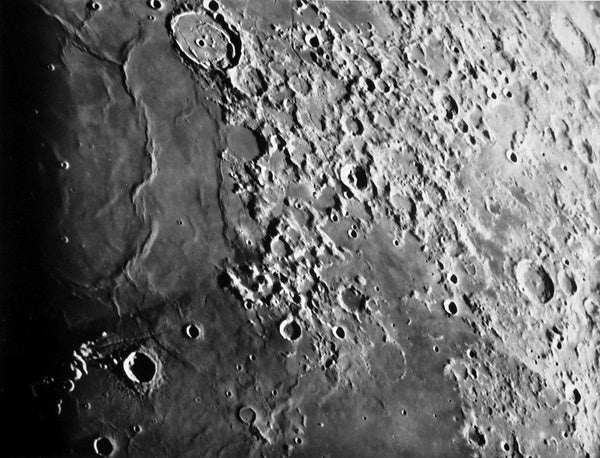But food fights can be metaphors for messy disagreements, too, and these are instructive because they gave us the state of astronomy today.
So, what are the top astrophysical food fights?
Most would immediately cite the 2006 International Astronomical Union (IAU) decision to demote Pluto from planethood. This ruling pitted astronomers against each other, often based on sentimentality, tradition, and nostalgia for a planet that shares a name with a certain cartoon dog. The consensus seems to be that Pluto was misclassified when it was first discovered — after all, many other similarly sized bodies that are not planets would have to become planets if Pluto were reinstated. And, anyway, no one has the stomach for going back into battle over it.
But this controversy wasn’t the first time the IAU got egg on its face.
Another big-time IAU food fight happened in the 1970s, when they decided to rename many of the Moon’s features and give them Latin titles. For centuries, Moon-watchers using small telescopes took delight in seeing the low Sun highlight the many wrinkle ridges that cross the smooth, solidified lava seas. The largest, running north to south across the Sea of Serenity, was the Serpentine Ridge.
“We don’t care if that’s been its name for 200 years,” said the IAU (in effect). “From now on, such ridges will be called dorsa.” Lunar researchers quickly grabbed doughnuts for ammo. Even today, planetary scientist Charles Wood, in his preface to 21st Century Atlas of the Moon (West Virginia University Press, 2013), insists the IAU “went crazy” and “introduced confusion and chaos,” and refuses to label the beloved Serpentine Ridge with its new official designation of Dorsa Smirnov.
It got worse. Craters honoring famous people were also latinized. The crater Ptolemy is now Ptolemaeus. Chains of craters are now catena. Faults are rupes. Most of us have gotten used to it. But doughnut fragments still litter the landscape.
Sometimes the food fight is personal. Most astronomers admired Halton Arp’s cranky stubbornness as he endlessly tried to show that high redshifts are not necessarily indicators of high recession speed and thus greater distance from Earth. His pet “proof” — Stephan’s Quintet in Pegasus, where a seemingly attached-to-the-others galaxy has a disparate redshift — drew heated exchanges for years until the Hubble Space Telescope’s ability to see individual stars in the outlier, NGC 7320, proved Arp was mistaken. NGC 7320 is not part of the group at all, but actually a foreground galaxy that lies much closer to Earth than the others.
Mistaken or not, determined astrophysicists doing the Don Quixote thing actually are part of science’s precious process. Long after the martian canals controversy and the Great Debate over whether “spiral nebulae” like Andromeda were merely objects within the Milky Way, popular books sometimes offered wacky ideas that found support with a few astrophysicists, to the consternation of the majority. In 1950, Immanuel Velikovsky’s Worlds in Collision claimed Venus is a newborn planet, ejected by Jupiter as a clump of material that initially roamed the solar system as a comet. He also claimed biblical events could be explained by this pre-Venus comet. According to him, the “manna from heaven” that purportedly fed the fleeing Israelites was actually bits of edible comet fragments falling from the sky. It made sense since comets, he insisted, contain carbohydrates.
For years, the idea had adherents. Finally, astronomers had had enough. Not only did Velikovsky’s theory dismiss well-understood celestial mechanics, they said, but in suggesting people could munch on comet material, Velikovsky was obviously mixing up carbohydrates with hydrocarbons. Actually, Venus’ atmosphere had been found to contain neither. Still, the nutriment legacy lingers when we say that comets come here from the “oort cloud.”
These days, the food fights continue. We have one camp arguing for dark matter and the other thinking that gravity behaving oddly at low levels can better explain the observations of galaxies’ rotation. And we have one camp believing we can do more solar system science with automated probes, while another pushes for crewed visits to other planets.
It never ends. And hopefully, it never will.










